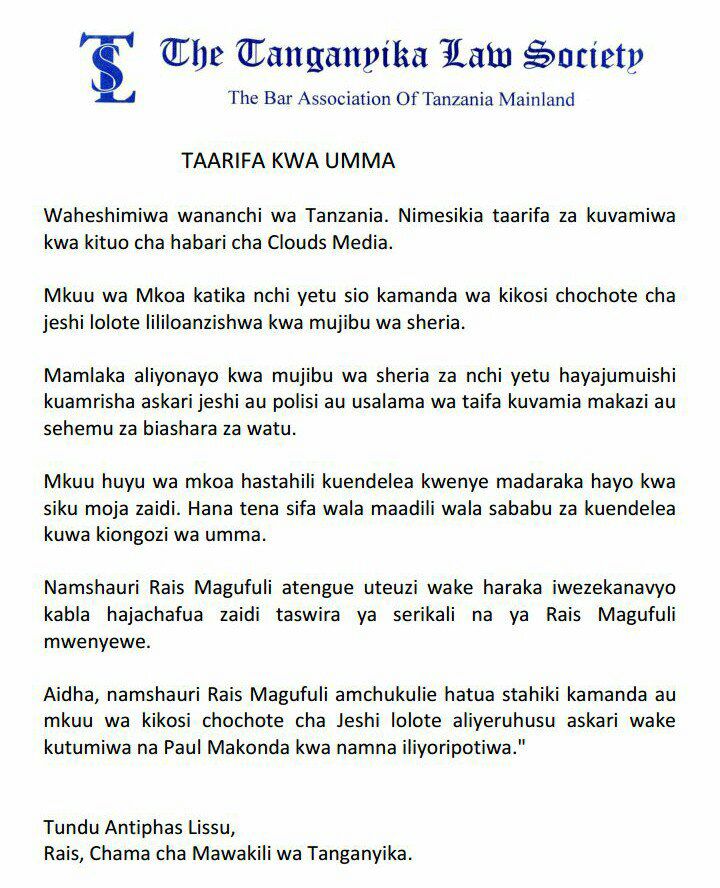MAAJABU YA MTANDAONI,BOFYA HAPO CHINI HUTAAMINI MACHO YAKO
Just for you!!
Their corporate business development unit has been placed with direct report to the CEO and staffed with a variety of different competences – strategists, M&A experts, lawyers as well as experienced programme managers. All competences needed to successfully execute the strategy.
On the opposite side of the success equation we find the units that are less successful. Typically, they are organisations that have asked their business development units to explore new business opportunities and assist the organisation in building a highly efficient, cost-effective and flawless organisation but failed to provide the unit with an organisational context and overriding purpose through which the business development initiatives could be managed. Often what happens is that one or two bright guys or girls are hired with a background from finance or management consulting. They have responded to a job ad or a headhunter power speech promising them a job close to top management and a task of freedom to analyse, advice, instruct, engage and change. Reality, however, is that these units are not driven by a long-term strategic aspiration but merely by request only. The consequence is that business development becomes detached from both the annual and the strategic planning processes and becomes an ad hoc centre for problematic projects, often in close collaboration with external consultants.
Indeed, what distinguishes successful business development practices from those who do well is that
As such, successful business development plays an integrative role in modern organisations – bridging the gap between strategic intent and organisational execution. They orchestrate, co-ordinate and facilitate the strategy management process across the company and in effect form an "office of strategy management" that provides a clear link between top management and the rest of the organisation, making sure that the strategy is formulated, translated and executed.
TAFADHALI SHARE HABARI HII KWA RAFIKI ZAKO HAPO CHINI ILI IWAFIKIE NA WENGINE PIA
Pig industry sustains livelihoods of many families in Kenya. Pig rearing has been one of wellestablishedindustry
in Kenya following growing export markets and increasing number of health
conscious consumers. Pig production if efficiently managed has great potentials for increasing
protein supply in Kenya. Smallholder pig farms in Tharaka-Nithi County have been facing
varying and dismal profits. The main objective of this study will be to establish which
institutional arrangements and management factors affect the profit efficiency of small-holder
pig farmers in Tharaka-Nithi County. A multi-stage purposive sampling technique will be
adopted to collect cross sectional data of eighty (80) smallholder pig farmers in Maara
Constituency by the use of semi-structured interview schedules. The work will employ Data
Envelopment Analysis to come up with profit efficiency rankings among the farmers and
stochastic frontier profit function will be used to analyze the factors that affect profit efficiency.
The data will be processed using STATA and DEA Frontier packages. The findings could be
useful to the stakeholders of the pig industry sub sector to formulate policies pertaining to pig
enterprise inputs, marketing issues and financial products and also can establish benchmarks
which can be used as a package for enhancing and stabilizing profit efficiencies of smallholder
pig farmers which in turn could help improve the Kenya economy.
An Overview of Livestock Sub-sector in Kenya Perspectives, Opportunities and Innovations for Market Access for Market Access for Pastoral Producers Recent statistics point that the livestock sub-sector in Kenya accounts for approximately 10% of the National Gross Domestic Product (GDP). This is 30% of the agricultural GDP. It employs about 50% of the national agricultural workforce and about 90% of the ASAL workforce. 95% of ASAL household income comes from this sub-sector. This is despite the fact that the sector receives only 1 % of the total annual budget allocation. The livestock resource base is estimated at 60 million units comprising of 29 million indigenous and exotic chicken, 10 million beef cattle, 3 million dairy and dairy crosses, 9 million goats, 7 million sheep, 0.8 mi camels, 0.52 mi donkeys and 0.3 million pigs. (Strategy for Revitalizing Agriculture (SRA) 2003) Kenya is broadly self-sufficient in most livestock products but is a net importer of red meat mostly inform of on-the-hoof animals trekked across the porous boundaries of neighbouring countries- Somalia, Ethiopia, Sudan, Uganda and Tanzania. Livestock supply in Kenya results from a complex set of interactions between Kenya and its neighbours and the traditional Middle East market and their respective livestock populations, demand and market prices. Kenya is part of a regional market where livestock flow according to markets and price differentials in a liberalized system throughout the region as a whole and where Nairobi represents a focus of demand for the region Supply of red-meat from domestic cattle, shoats and camels falls short of demand, and is almost permanently augmented by a traditional livestock trade drawn in from neighbouring countries, especially Somalia, Tanzania, Sudan and Ethiopia in varying quantities according to demand, which maintains a supply/demand
[1.6MB]SIJAAMINI WEMA SEPETU ANACHOKIFAYA HAPO KWENYE HII VIDEO BOFYA UONE












